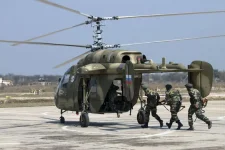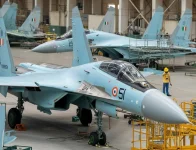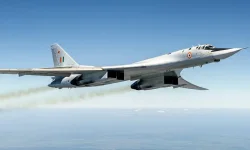- Views: 2K
- Replies: 18
With a nearly decade-old agreement with Russia for new utility helicopters at a standstill, the Indian Army is now evaluating the Italian AW109 TrekkerM as a potential replacement for its obsolete Cheetah and Chetak fleets.
Italian defence firm Leonardo has re-entered the Indian market, actively promoting its helicopter following the Indian government's decision to lift a ban on the company.
The Indian Army and Air Force have a critical and long-standing need for approximately 400 new light utility helicopters. These are required to replace the HAL Cheetah and Chetak helicopters, which were first inducted in the 1960s and are now well past their service life.
The vintage state of this fleet poses significant operational and safety challenges, particularly for missions in high-altitude areas like Siachen and along the Line of Actual Control (LAC).
To address this gap, India and Russia signed an Inter-Governmental Agreement in 2015 to jointly produce 200 Kamov Ka-226T helicopters. The deal, valued at over $1 billion, was a cornerstone of the “Make in India” initiative in defence, with 140 of the 200 helicopters slated for manufacturing in India by Hindustan Aeronautics Limited (HAL).
However, the project has failed to move forward due to persistent disagreements over local manufacturing content and complications arising from the helicopter's French-made engines, which raised concerns about potential international sanctions.
Recent reports indicate Russia may re-offer the helicopter with a new Russian-made engine, but the deal's future remains uncertain.
This delay has created an opportunity for other international manufacturers.
Following the lifting of a ban related to a previous VVIP helicopter deal, Leonardo is now proposing its AW109 TrekkerM as a ready solution. The company is promoting the aircraft as a modern, multi-mission helicopter well-suited for India's demanding operational environment.
The AW109 TrekkerM is a twin-engine helicopter in the three-tonne class, a feature that offers enhanced safety and superior performance in the hot-and-high conditions typical of India's northern borders.
Its two Pratt & Whitney Canada engines provide a significant advantage in power and payload capacity over single-engine helicopters.
The aircraft is equipped with a modern glass cockpit and advanced avionics, which improve pilot situational awareness and overall flight safety.
Leonardo has highlighted the helicopter's mission flexibility.
Its spacious cabin can be quickly reconfigured for various roles, including transporting up to six fully-equipped troops, medical evacuation (MEDEVAC), search and rescue, or armed escort missions.
The helicopter's rugged design and skid landing gear make it capable of operating from unprepared landing zones in difficult mountain terrain.
Aligning with India's 'Atmanirbhar Bharat' policy, Leonardo has proposed manufacturing the AW109 TrekkerM locally through partnerships with Indian private sector firms. This approach could potentially achieve a high degree of indigenous content, a key requirement that proved to be a major hurdle in the Russian deal.
Defence analysts note that the twin-engine AW109 TrekkerM would not be a direct competitor to India's indigenously developed single-engine HAL Light Utility Helicopter (LUH). Instead, it could serve as a complementary asset, filling a distinct capability gap for a more powerful twin-engine platform in the Army's aviation corps.



